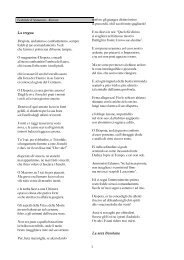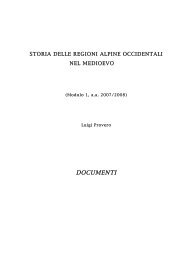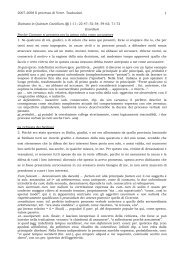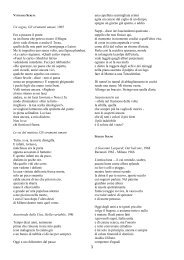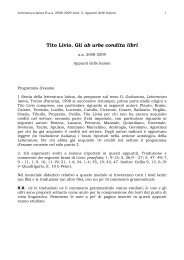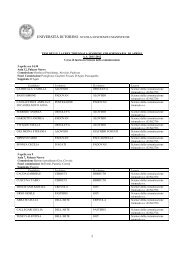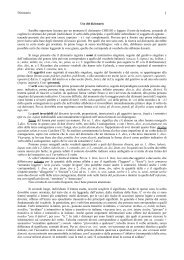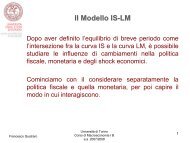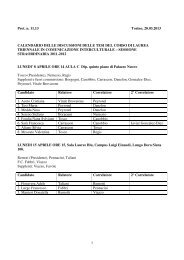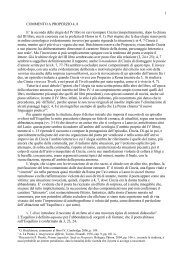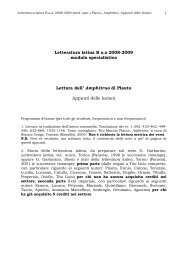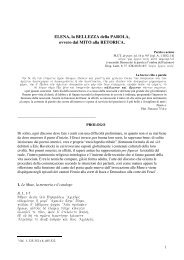ajAti vAda
ajAti vAda
ajAti vAda
You also want an ePaper? Increase the reach of your titles
YUMPU automatically turns print PDFs into web optimized ePapers that Google loves.
premises of any question or definition that presupposes duality. As an aside, these<br />
authors are quite aware that their method is very close to the madhyamaka approach, but<br />
they categorically assert brahman as the only absolute, and still find fault with<br />
nAgArjuna for not asserting the existence of one absolute.<br />
dRshTi-sRshTi <strong>vAda</strong> :-<br />
This brings me to the third view, namely dRshTi-sRshTi <strong>vAda</strong> - the view that cognition<br />
and creation are simultaneous. It is generally assumed that this view was first<br />
propounded by prakASAnanda sarasvatI (ca. 16th century CE) - in his vedAntasiddhAnta-muktAvalI.<br />
This author also wrote texts on SrIvidyA, such as tArAbhaktitarangiNI.<br />
It is generally assumed that this view is an entirely new position, unknown to<br />
earlier authors in the advaita tradition. However, it should be pointed out that the<br />
gauDapAdIya kArika also teaches a very similar view in its arguments leading up to<br />
<strong>ajAti</strong> <strong>vAda</strong>. This view comes close to many schools of subjective idealism and to the<br />
buddhist vijnAna<strong>vAda</strong>. It also seems to throw up the most interesting logical paradoxes<br />
that are familiar to those interested in interpretations of quantum mechanics, e.g. the act<br />
of observation itself causing a particular collapse of a wave function, thus creating its<br />
outcome in some sense, and the absolute necessity of the observer in any description of<br />
an event.<br />
Within traditional vedAnta discourse, numerous objections can be raised against this<br />
view. If ISvara exists in the vyAvahAric sense, then is he the creator of the universe or<br />
not? If yes, dRshTi-sRshTi <strong>vAda</strong> is contradicted, for it holds that the jIva creates<br />
simultaneously with cognition. This means there are multiple creators, in addition to<br />
ISvara. If it is said that the jIva and ISvara are both brahman and the created entity is<br />
also brahman (since everything is brahman), so that the creation by a jIva does not<br />
contradict ISvara's creatorship, the objection to this would be that such a view ends up<br />
partitioning brahman into several different real entities, but brahman cannot be so<br />
divided. If ISvara is said not to be the creator, then this view contradicts Sruti. Besides,<br />
what is the practical use, to the spiritual aspirant, of admitting such an ISvara?<br />
In answer to all these objections, it should be emphasized that the dRshTi-sRshTi view is<br />
also closely allied to what is known as the eka-jIva <strong>vAda</strong>, and cannot be viewed<br />
independently of it. The eka-jIva <strong>vAda</strong> holds that, ultimately speaking, there is only one<br />
jIva, which is identical with brahman. If this is understood, all the above objections<br />
simply vanish. There is no question of multiple creators, as there is only the one jIva,<br />
identical with brahman. The dRshTi-sRshTi vAdin also does not "really" partition<br />
brahman into several different entities. On the contrary, it is the above mentioned<br />
objector who actually assumes that brahman can be so partitioned. As for the practical<br />
use to the spiritual aspirant, the dRshTi-sRshTi view is freely admitted to be useful only<br />
for the advanced sAdhaka who does not cling to a view of multiple, real jIvas. Such an<br />
aspirant also does not define his ISvara with respect to the creation, and is, in fact, better<br />
suited to really understand what the Sruti means, when it says that brahman creates by<br />
mere seeing (tad aikshata).



